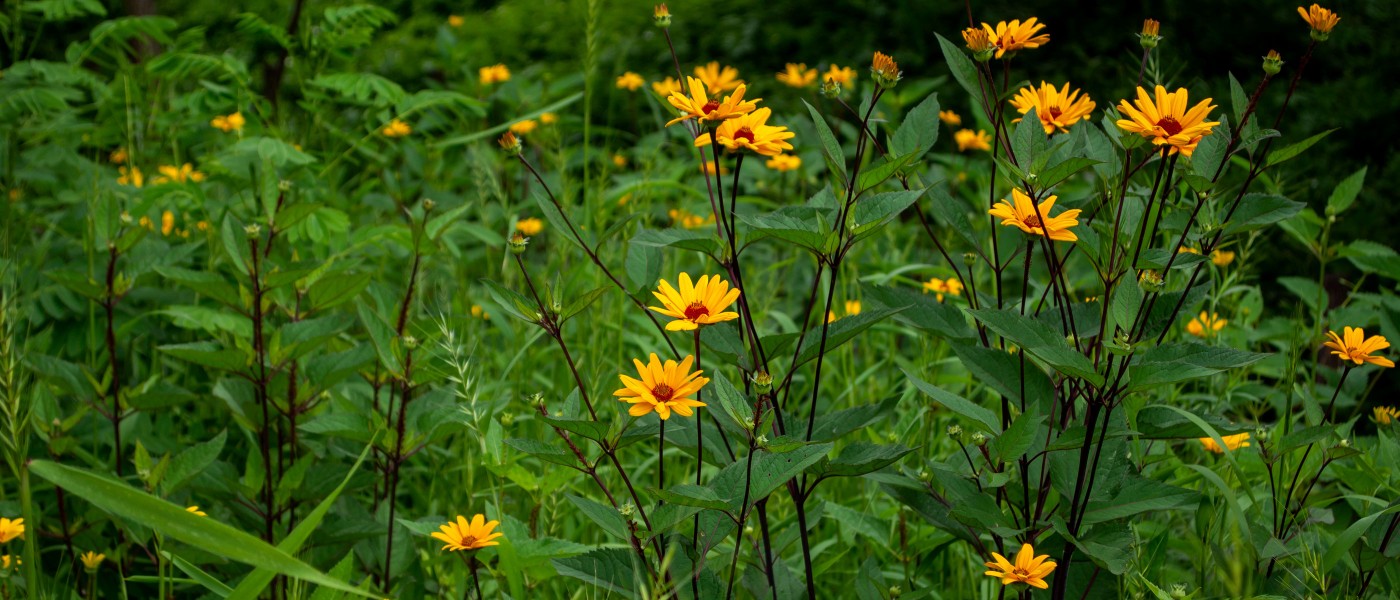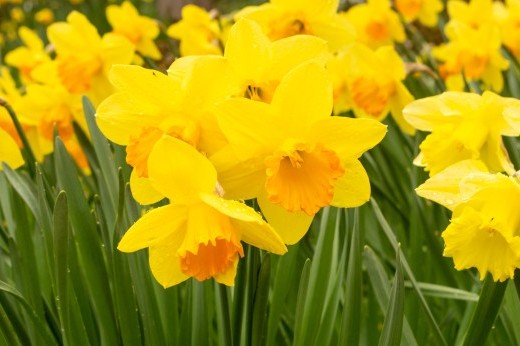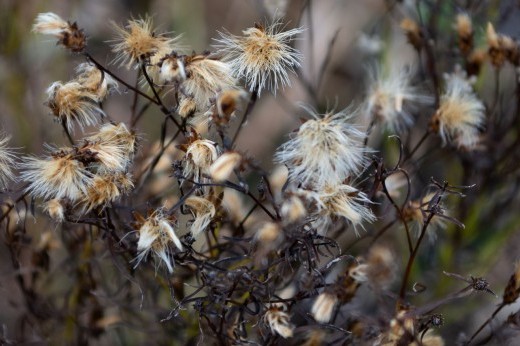Welcome to the summer installment of Ask a Gardener, a seasonal gardening advice column written by Rock Garden curator Laura Powell.
What is mulch, and when and how should I use it?
Nina, Brooklyn, NY
Dear Nina,
Simply put, mulch is any material used to cover the soil surface.
If you prefer simple, you can stop reading this column now, buy some shredded bark mulch and spread it in your garden bed. If you want a little more depth and complexity, keep reading.
Mulch can be organic (carbon-based) or inorganic. Examples of organic mulch include wood chips, leaves, grass clippings, straw, buckwheat hulls—think of something plant-based that can cover your soil, and it’s probably been used as mulch. Inorganic mulches include pebbles, gravel, and landscape fabric.
Both kinds of mulches help conserve moisture in the soil, suppress weeds, moderate soil temperature, reduce erosion, reduce lead exposure, and add a finishing aesthetic touch to a garden bed or landscape. Organic mulches have the additional benefit of enriching the soil when they decompose.
There are a few downsides to mulching. Mulching can disturb the activity of some friendly organisms, like ground-nesting bees. Mulches that are high in carbon, like wood chips, can tie up the nitrogen in the soil while they decompose. Additionally, if you want your plants to propagate in your garden by seed, you may choose to leave your soil surface uncovered, since mulch will inhibit germination.
When choosing mulch, also keep in mind that anything you put on your soil surface will get absorbed into your soil over time, so be careful not to choose any potentially toxic materials (like dyed shredded bark).
Ideally, you would apply mulch in the spring after the soil has warmed and before weeds have emerged, but you can apply mulch anytime of the year. If you apply before the ground has thawed, it might delay your soil warming in the spring—but if winter is when you have time to apply mulch, then do it in winter. If you apply mulch late in the summer or in the fall, it will be less effective for weed suppression, but if that’s when you have time, do it in the late summer or fall.
Applying mulch is pretty simple. First, remove any weeds and level the soil. Next, spread the mulch evenly over the surface of the soil in a 2–3-inch-thick layer. Take care not to pile the mulch against the trunks of woody plants.
How often should I water my garden?
Eileen, Brooklyn, NY
Dear Eileen,
How long is a piece of string?
Just kidding. Sort of.
When I was a teenager working at a retail nursery, I was instructed to reply “once a week” whenever a customer asked how often to water a plant. The nursery owner thought that a more complicated answer would make customers feel too intimidated to buy the plant. (Also, he had little incentive to provide nuanced watering information—after all, if the plant died in the customer’s care, that was more business for him when the customer returned.)
The honest answer is that it’s a little more complicated than “once a week.”
How often you need to water your garden depends on various factors, including the type of plants, weather conditions, soil type, and the stage of plant growth.
Historically, time of year has been a factor as well—gardeners in the Northeast generally did not think about watering in the winter, for example—but with our changing climate, things can be less predictable. For example, you may need to water your evergreen plants during an unusually warm winter like the one we had this year. This spring, too, was unseasonably dry, and we found ourselves watering earlier in the year than we had in the past.
Here is a list of steps to help you stay in tune with your garden’s watering needs:
- Pay attention to the weather. Has it been hot, sunny, dry, and windy? If so, you’ll need to water more frequently, as these conditions increase the rate of evaporation and transpiration, leading to faster water loss from the plants and soil. Conversely, has it been cloudy, cool, or rainy? In these conditions, you’ll need to water less frequently.
- Stick your finger into the soil up to the second knuckle. If the soil feels dry at that depth, your garden could probably use a drink.
- Know the water needs of the plants in your garden. A garden of drought-tolerant plants like succulents will need to be watered less frequently than a garden full of tropical annuals. Is a plant newly planted? If so, it does not have an established root system yet and will need to be watered more frequently than a more established plant.
- Get to know your soil type and drainage. If you have sandy soil that drains quickly, you may need to water more frequently than if you have clay soil.
When you do water, remember that the term “overwatering” refers to frequency of watering, not amount of water. Plants like a good, deep drink when they are watered, and then they like to get a little dry before the next soaking (how dry varies by plant).
Each time you water, thoroughly soak the soil, don’t just wet the surface. Watering deeply encourages plants to develop deeper roots, which makes them more resilient to drought. If possible, it’s a good practice to water in the morning rather than in the heat of midday when the water will evaporate more quickly, or in the evening when the water lingers and could encourage fungal growth.
We love how our garden blooms in the spring, but come summer all we see is green. Are there any plants that flower throughout the year?
Mark, Cambridge, MA
Dear Mark,
Gardeners tend to buy plants in the spring, and we tend to buy plants that are in bloom. As a result, we end up with mostly spring-blooming plants. Which is not necessarily a bad thing! Green is a color, too, and a lush green garden can be beautiful even without flowers.
But it sounds like you want more color in your garden. Which is great, because adding summer- and fall-blooming plants to your garden can be beneficial for local pollinators and migrating insects and birds, and bring pleasure to people as well.
To extend the bloom season of your garden, I recommend adding warm-season annuals as well as summer- and fall-blooming perennials.
Annuals are plants that complete their life cycles in one year and therefore need to be replanted annually. Perennials are plants that will persist in your garden for multiple years. Perennials tend to be the more efficient and ecologically friendly option (deeper root systems reduce irrigation needs, and buying fewer plants is less resource-intensive and reduces the risk of introducing plant diseases). Perennials also contribute to soil health and help control erosion because they require less soil disturbance.
Flowers (and fruit) are costly for plants to produce, but plants invest the resources into it anyway because, like all living things, one of their primary goals is to reproduce. Because flowering is so resource-intensive, most perennial plants bloom a short time and then return to investing in foliage and root growth, which will ensure they are able to return for another year and bloom again. Annuals bloom for longer because their life cycle is completed in one year, so they do not need to allocate resources to extensive root systems.
Below are some examples of summer- and fall-blooming annuals and perennials.
(If the full species epithet is not listed in parentheses, the majority of the species and cultivars available in that genus will work for your purposes. Plants marked with * are cultivated for colorful foliage rather than flowers. Plants marked with ** can be grown from seeds sown directly in your garden.)
Warm-season annuals (sun)
Cosmos (Cosmos species)**
Sweet alyssum (Lobularia maritima)**
Spider flowers (Cleome species)**
Snow-on-the-mountain (Euphorbia marginata)**
Mexican poppy (Argemone mexicana)**
Mexican sunflower (Tithonia diversifolia)
Zinnia (Zinnia species)
Warm-season annuals (shade)
Impatiens (Impatiens species)
Coleus (Coleus species)*
Browallia (Browallia species)
Summer- and fall-blooming perennials (sun)
Echinacea (Echinacea species)**
Cardinal flower (Lobelia cardinalis)**
Aster (Aster species)**
Little bluestem (Schizachyrium scoparium)**
Joe-pye weed (Eutrochium species)**
Switchgrass (Panicum virgatum)**
Milkweed (Asclepias species)**
Rudbeckia (Rudbeckia species)**
Goldenrod (Solidago species)**
Purple poppy mallow (Callirhoe involucrata)**
Bee balm (Monarda species)**
Summer- and fall-blooming perennials (shade)
Thimbleweed (Anemone virginiana)**
Astilbe (Astilbe species)**
Japanese anemone (Anemone hupehensis)**
Blue wood aster (Symphyotrichum cordifolium)**
Tall bellflower (Campanula americana)**
Hardy blue-flowered leadwort (Ceratostigma plumbaginoides)
Painted lady fern (Athyrium niponicum var. pictum)*
Toad-lily (Tricyrtis species)
If you live nearby, come by Brooklyn Botanic Garden in the summer and fall to get more ideas for flowering plants to add to your garden.
The Annual Border at the Garden has an eclectic and inspiring mix of annual plants that bloom in the summer, often for months. On the opposite side of Lily Pool Terrace is the Perennial Border, where you can get inspiration for summer- and fall-blooming perennial plants. A visit to the Native Flora Garden will give you ideas for native landscape options—and don’t miss the Water Garden, which has a great collection of summer- and fall-blooming perennials.
Enjoy the season!
Got a question for Laura? Submit questions for our fall installment of Ask a Gardener using the form below.



